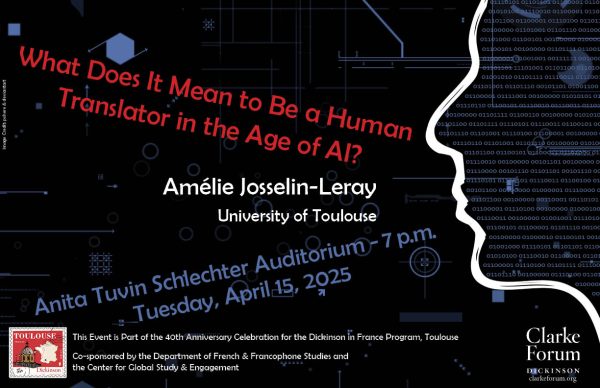Defending the Wall of Love
Walls have been humankind’s preferred tool for division and exclusion for centuries. They’ve been used to defend against invading armies and to delineate a border. Across six continents and in many forms, walls have been erected in various shapes for various purposes. Most have not achieved the perfect division for which they were built.
Walls are a universal symbol of hate. Earlier this month, however, the Student Liberation Movement reclaimed them as a symbol of love by putting up the red cardboard Wall of Love around the HUB staircase. Dickinsonians could Sharpie words of support and solidarity for those feeling threatened or unsafe right now and see the outpouring of love and unity from across our community. Rather than keeping some “others” out, the Wall of Love embraced our diversity and showed that, as each brick is stronger as part of the whole, so are the members of the Dickinson community. It was an undeniably powerful collective gesture, in line with and representative of the values of this community and this institution.
Our intentions were purely to build solidarity. True, we did take a stand, albeit against the poisons of division and demonization. It was political, as any demonstration or attempt to build support for marginalized and oppressed groups is, but it was intentionally non-partisan. The note adjoined to the Wall clearly stated that “this wall is brought to the Dickinson community as an artistic expression of resistance and solidarity. This wall promotes love and unity.”
Each individual is free to construct the context around the Wall that they want to, obviously, but it was disappointing to hear that fellow Dickinsonians were opposed to such a show of solidarity for others in our community, even rumoring to tear it down. Unfortunately, this reaction reveals the underlying power dynamics of this community: when a group representing and advocating for marginalized groups on campus puts up an exhibit to showcase and build solidarity amongst our fellow Dickinsonians, it’s smeared as being political, partisan, flagrant, and discriminatory. “Can the oppressor become the oppressed?” goes the age-old counter-argument. Critical race theory tells us that “racism is ingrained in the fabric and system of the American society,” and this racial hierarchy is perpetuated over time through our social, political, and legal institutions.
If you’re still unclear about white privilege, institutional racism and discrimination, and the perpetuation of unequal power dynamics over time, then you clearly didn’t take advantage of your Dickinson education or listen to the lived experiences of your peers here. If you want to stand against unity and solidarity with your fellow Dickinsonians, politicizing the creation of a space where we could stand with each other in support, that will paint you in a less-than-shimmering light. We know what and who we stand for.
The writers of the SLM include, but are not limited to, Brady Hummel ’17.



